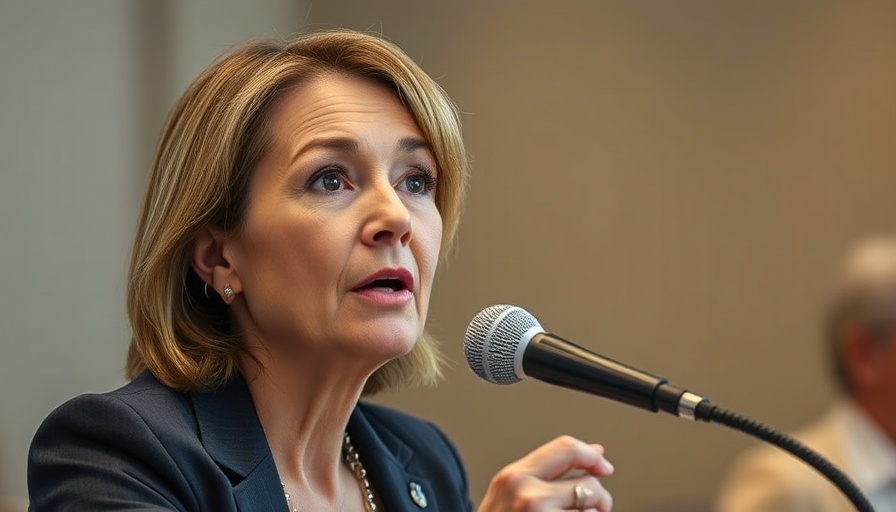
Understanding the Impact of Federal Funding Cuts on Local Health
As federal funding for public health dwindles, the ramifications on local health services are profound and often alarming. Chrissie Juliano, executive director of the Big Cities Health Coalition, shines a spotlight on how drastic cuts to the Department of Health and Human Services are directly affecting community health across the United States. During her recent address at the Health Journalism 2025 conference, she emphasized that a staggering 80% of the Centers for Disease Control and Prevention's (CDC) domestic budget is allocated to community organizations, state, and local agencies, which now face uncertain futures.
Preventative Health Measures at Risk
"Prevention is the key to public health," Juliano stated, arguing that cuts to public services undermine the systems necessary for averting disease and promoting wellness. With existing government public health frameworks being compared to a patchwork quilt held together by federal, state, and local fibers, these cuts risk tearing apart the very fabric that keeps communities safe. For instance, she pointed to how health agencies can implement regulations that health care providers cannot, emphasizing the critical role of local agencies in managing public health crises.
The Vaccine Clinics Scenario: A Harrowing Example
One concerning instance presented was the response to a measles outbreak in Texas, where local health officials used COVID funding to rapidly deploy vaccine clinics in areas with low vaccination rates. However, the termination of these funds leads to the cancellation of essential services just as public health emergencies arise. This unfortunate trend indicates how budget cuts can derail public health initiatives just when they are needed most.
Expertise and Resources Lost Amid Budget Cuts
Juliano shared a poignant case from Milwaukee, where a child was detected with dangerously high lead levels from ingesting paint chips at school. Health officials sought CDC assistance to address the potential threat in other schools—expertise that, with ongoing budget restrictions, will be severely lacking. This example highlights the substantial gap left by the withdrawal of federal support and the dangers associated with losing access to national public health resources.
Actions Communities Can Take
As local public health systems grapple with reduced budgets, communities can advocate for better funding and monitor the impacts of cuts through journalism and civic engagement. Journalists are encouraged to uncover both successes and challenges faced by public health entities as funding decreases, providing a critical voice to community needs and issues.
The Call for Awareness
In the wake of these budget cuts and their consequences, it’s essential for health enthusiasts to understand the local ramifications of federal funding disappearances. Public health is intertwined with our daily lives, affecting well-being from nutrition, fitness, and mental health to exercise and healthy eating habits. Through awareness, we can encourage community action and support health initiatives that keep our neighborhoods vibrant and healthy.
The Power of Community Engagement in Public Health
Increasing community engagement will not only foster awareness but also empower residents to advocate for better health resources. By participating in local workshops or wellness programs, individuals can take charge of their health, explore nutrition, stress management, and exercise options, while collectively addressing community health needs.
Conclusion: The Future of Local Public Health Depends on Us
The interplay of federal cuts and local public health shows just how fragile our health systems can be. Engaging with community health initiatives, supporting local health programs, and voicing concerns to policymakers can help safeguard the well-being of our neighborhoods amidst uncertainty. It is time to rally together to ensure that vital public health services are not only preserved but enhanced. Together, we can advocate for a healthier future.
 Add Row
Add Row  Add
Add 




Write A Comment